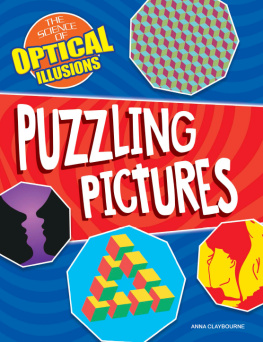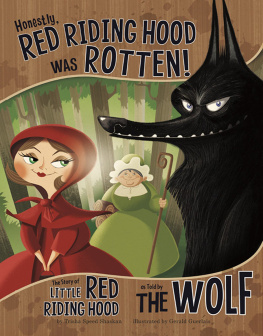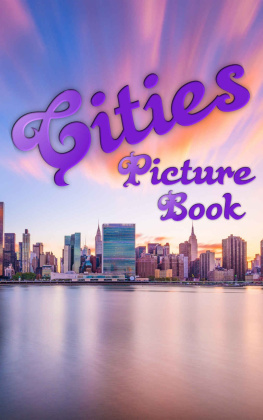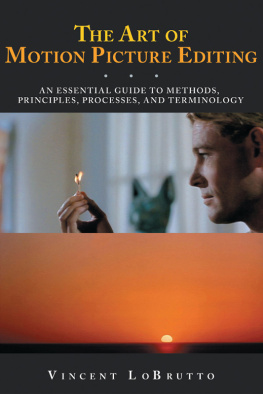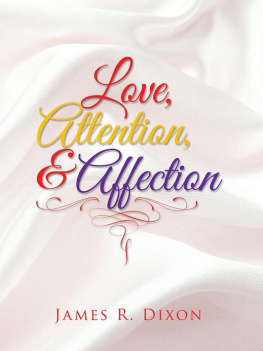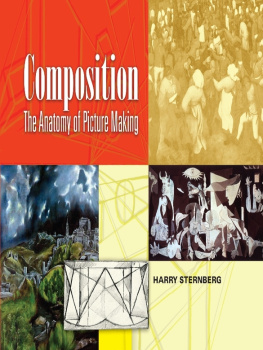

To Leon and Monika, who both started it all,
to Jim and Penny, my constant superb critics and consultants,
to Melissa Manlove and David Macaulay, who filled me with amazed gratitude,
and with special thanks to Dick
Copyright 1991, 2016 by Molly Bang.
All rights reserved. No part of this book may be reproduced in any form without written permission from the publisher.
Library of Congress Cataloging-in-Publication Data:
Bang, Molly, author.
Picture this : how pictures work / Molly Bang. Revised and Expanded 25th Anniversary Edition.
pages cm
First published as Picture This: Perception and Composition by Bullfinch Press/Little, Brown and Company, Boston, 1991.
ISBN 978-1-4521-3515-1 [hardcover]
ISBN 978-1-4521-5199-1 [paperback]
ISBN 978-1-4521-5422-0 [epub]
1. Visual perception. 2. Design. I. Title.
NK1510.B258 2016
741.6'74dc23
2015036410
Design by Amelia Mack.
Typeset in Nobel Book and Bodoni Egyptian.
Chronicle Books LLC
680 Second Street
San Francisco, CA 94107
www.chroniclebooks.com
Preface
I was quite happily making my living as a writer and illustrator of children's books. One day I was sketching objects around the house while an old friend, Leon Shiman, was visiting. Leon suggested I draw not just isolated objects, but whole views, whole pictures. The more I drew, the more I knew I was lost. As we looked at the sketches together and talked about them, Leon said, You really don't understand how pictures work, do you?
No, I did not. I didn't understand picture structure. I didn't even understand what picture structure meant. But could I learn?
I took a painting course with Sava Morgan, an artist who had taught for years in New York City. I read books on art and on the psychology of art. I went to museums and galleries to look at paintings and try to figure out what I felt about them and what the paintings were doing. And I decided to make pictures with my daughter's third grade class, hoping I'd learn something from teachingas one often does.
Working with the children, I realized that I wanted to make pictures with clearly different emotions, but I also wanted to stay very simple. I decided to build an illustration from Little Red Riding Hood, since this story was familiar to everybody, and I knew I could make a scary wolf from a few sharp triangles. But I had to make a comforting picture first, to contrast with the scary wolf. I used simple shapes cut from four colors of construction paperred, black, pale purple, and white. As the children gave me directions for how to make a picture scarier or more comforting, we realized something we already knewsomething about pictures and feelings. We just hadn't defined it yet.
This was not a particularly helpful project for the third grade. They felt that cutting paper was too much like kindergarten, and they were third graders! They wanted to learn how to make things look real. But I knew I was on to something, so I took my scissors and my construction paper home and kept cutting, arranging, looking, and thinking. I began to see how certain elements in pictures affect our feelings.
Pretty soon I wanted to see if other people could apply to their own pictures the principles I had uncovered. It was clear that younger children understood them but were not particularly interested in this mix of geometrical abstraction and emotional expression, so I taught eighth and ninth graders and then adults. The pictures they made convinced me that anyone and everyone could use a few clear principles to build powerful visual statements: emotionally charged arrangements of shapes on a page.
I wrote up what seemed to be going on, then sent it to Rudolf Arnheim, the dean of the psychology of art in the United States, whose books I had found most helpful. Almost immediately I received a courtly letter back saying that he liked the book and had some suggestions if I didn't mind his scribbling on the sides of the pages. Mind? I asked him to please scribble, scribble away. He returned the manuscript with comments on almost every page, each one insightful or illuminating, and I incorporated every one.
Now, I felt I'd found something pretty fundamental here, but I didn't quite know what it was, so when I sent Arnheim the revised text I asked him if he could tell me what I'd done. He wrote,
What is... so special and striking about the style of your book is that it uses geometrical shapes not as geometry, which would not be all that new, not as pure percepts in the sense of psychology textbooks, but entirely as dynamic expression. You are talking about a play of dramatic visual forces, presenting such features as size or direction or contrast as the actions of which natural and human behavior is constituted. This makes your story so alive on each page. It gives to all its shapes the strength of puppets or primitive wood carvings, not giving up abstractness but on the contrary exploiting its elementary powers.... You are [also] taking the prettiness of the nursery out of the fairy tale story and reducing it to the basic sensations, taking the childlike-ness out of it but leaving and even enforcing the basic human action that derives from the direct visual sensation. It is what remains of Red Riding Hood if you take the prettiness out of it and leave the stark sensations we experience when we rely on direct and pure looking.
This was exciting. Even if I didn't exactly understand what it meant, it corroborated what I'd felt all along: I had understood some basic connection between emotions and how we see pictures. I've since thought and thought about Arnheim's answer and about what I'd felt from watching the principles appear and the book take form. For me, the book explores one question and only one question:
How does the structure of a pictureor any visual art formaffect our emotional response?
Building the Emotional Content of Pictures


We see shapes in context,
and our reactions to them depend in large part on that context. If this were an illustration for a story about the ocean, we could variously read the red triangle as the sail of a sailboat, a shark's fin, a volcanic island rising from the sea, a red nun buoy, or the bow of a sinking ship. We feel very differently about the triangle if we see it as a sailboat than we do if we see it as a shark's fin.
But I thought of all this much later. I first decided to represent Little Red Riding Hood as a little red triangle and then asked myself, Do I feel anything for this shape? The figure is not exactly fraught with emotion, yet I knew I felt things about it that I didn't feel for others.
It isn't huggable. Why not? Because it has points. It makes me feel stable. Why? It has a flat, wide, horizontal base. It gives a sense of equanimity, or balance, as well, because its three sides are equal. If it were sharper, it would feel nastier; if it were flatter, it would feel more immobile; and if it were an irregular triangle, I would feel off balance. What about its color? We call red a warm color, bold, flashy; I feel danger, vitality, passion. How can one color evoke such a range of disparate, even conflicting, feelings?
Next page


